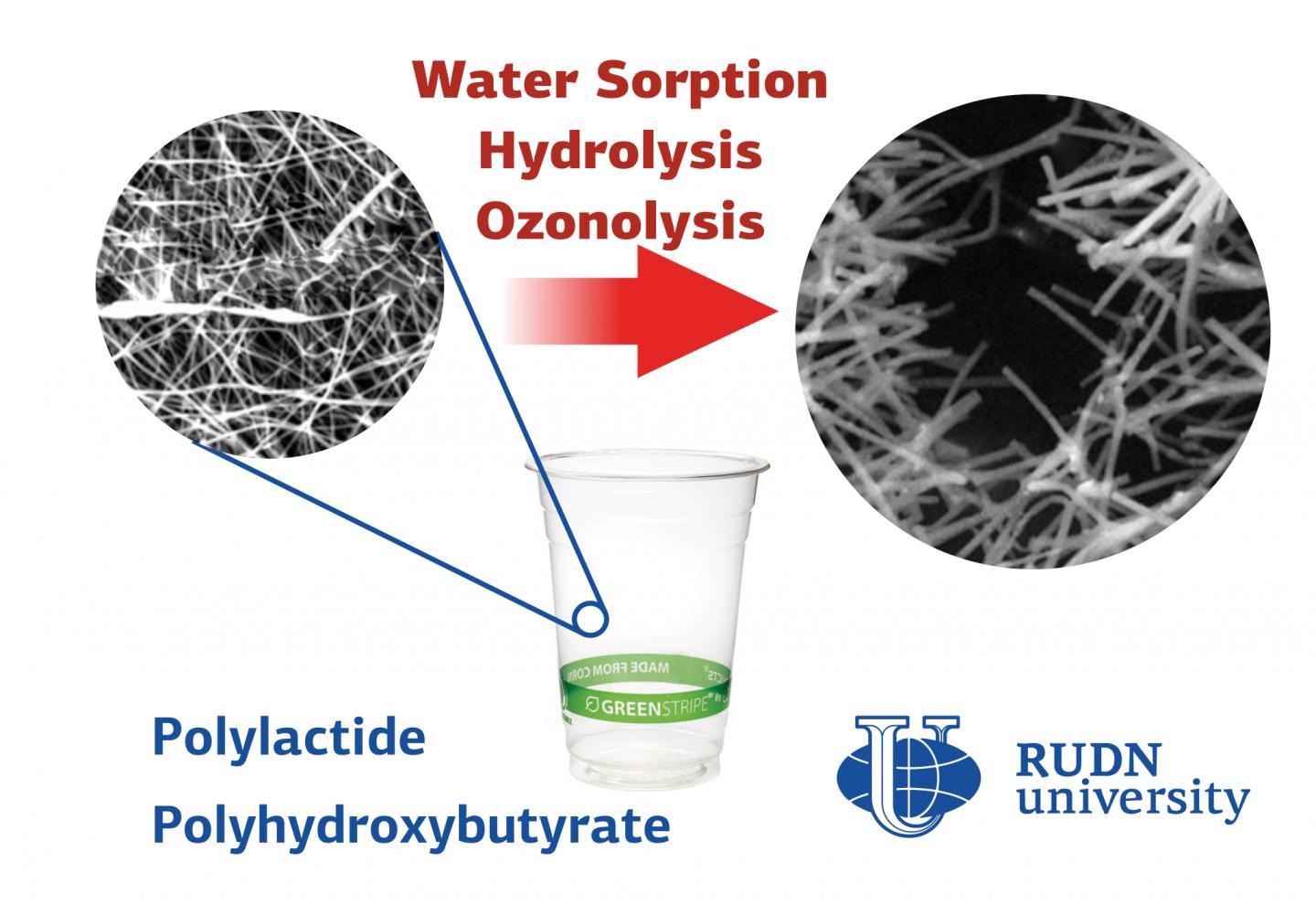Jun 17 2021
A biologist from RUDN University has investigated the aggressive effect of environmental factors, such as ozone, salts and water, on ultrathin nanofibers of biopolymers.
 RUDN University biologist studied the aggressive impact of environmental factors (water, salts, and ozone) on ultrathin nanofibers of biopolymers. The results will help to choose suitable bioplastic depending on the use; for example, for medical implants, biodegradable packaging, or filters for water cleaning. Image Credit: RUDN University.
RUDN University biologist studied the aggressive impact of environmental factors (water, salts, and ozone) on ultrathin nanofibers of biopolymers. The results will help to choose suitable bioplastic depending on the use; for example, for medical implants, biodegradable packaging, or filters for water cleaning. Image Credit: RUDN University.
These results will help select suitable bioplastic based on the application, for instance, filters for water cleaning, biodegradable packaging and for medical implants. The results of the study have been published in the Polymers journal.
Bioplastics are a suitable substitute for ordinary plastics. Bioplastics are acquired from both plant waste and the food industry. Due to the safe composition of bioplastics, they are used as medical implants, as “sponges” for cleaning reservoirs and as filters for liquids and gases.
Based on the field of application, bioplastics are exposed to many different environmental factors, like water, light, the physiological environment and temperature. However, the effects of the external environment on the nanostructure of bioplastic products are still unclear. A biologist from RUDN University has now identified how the environment impacts the nanofibers of two plastics of organic origin: polyhydroxybutyrate and polylactide.
We obtained the electrospun ultrathin fibers based on thermoelastic biopolyesters. Both of them produced from the naturally abundant renewable resources, namely, polylactide and polyhydroxybutyrate. But our main aim was not to obtain the fibers themselves, but to determine whether their properties are preserved under the impact of aggressive environmental factors.
Alexandre Vetcher, PhD, Deputy Director of the Scientific-Educational Centre “Nanotechnologies”, RUDN University
Using the electrospinning method, the researchers obtained six types of fibers from polylactide granules and polyhydroxybutyrate powder. The polymer solution was positioned in a high-voltage electrostatic field, “pulling” the solution into thin jets. Upon cooling, they turned into fibers. Six forms of finished fibers were obtained and these fibers differed based on the content of polymers in the composition, from pure polyhydroxybutyrate and polylactide to their blends in varying ratios.
The biologists from RUDN University investigated the effect of ozone, water and physiological environment (internal environment of the body) on the resulting nanofibers. They found that the water vapor absorption depends on the structure of the polymer. A higher proportion of polylactide causes the fibers to absorb more water, that is, up to 1% of the sample weight.
To replicate the internal environment of a living organism, scientists used a phosphate buffer. The polylactide fibers lost over 50% of their mass in solution over a period of 21 days, while samples with a high polyhydroxybutyrate content lost less than 15%.
Polymers containing higher polylactide also absorbed ozone molecules more rapidly when treated with this gas stream and the polymers were destroyed as a result of the intense oxidation. Ozone infiltrated the fibers with a 50:50 ratio of the two polymers the fastest.
We demonstrated that biodegradable nanofibers, which are characterized by a crystalline structure, are more resistant to decomposition by water and ozone. Now it is necessary to test these materials for resistance to UV light and microorganisms in order to determine the optimal applications for each type of fiber.
Alexandre Vetcher, PhD, Deputy Director of Scientific-Educational Centre “Nanotechnologies”, RUDN University
Journal Reference:
Olkhov, A. A., et al. (2021) Aggressive Impacts Affecting the Biodegradable Ultrathin Fibers Based on Poly(3-Hydroxybutyrate), Polylactide and Their Blends: Water Sorption, Hydrolysis and Ozonolysis. Polymers. doi.org/10.3390/polym13060941.